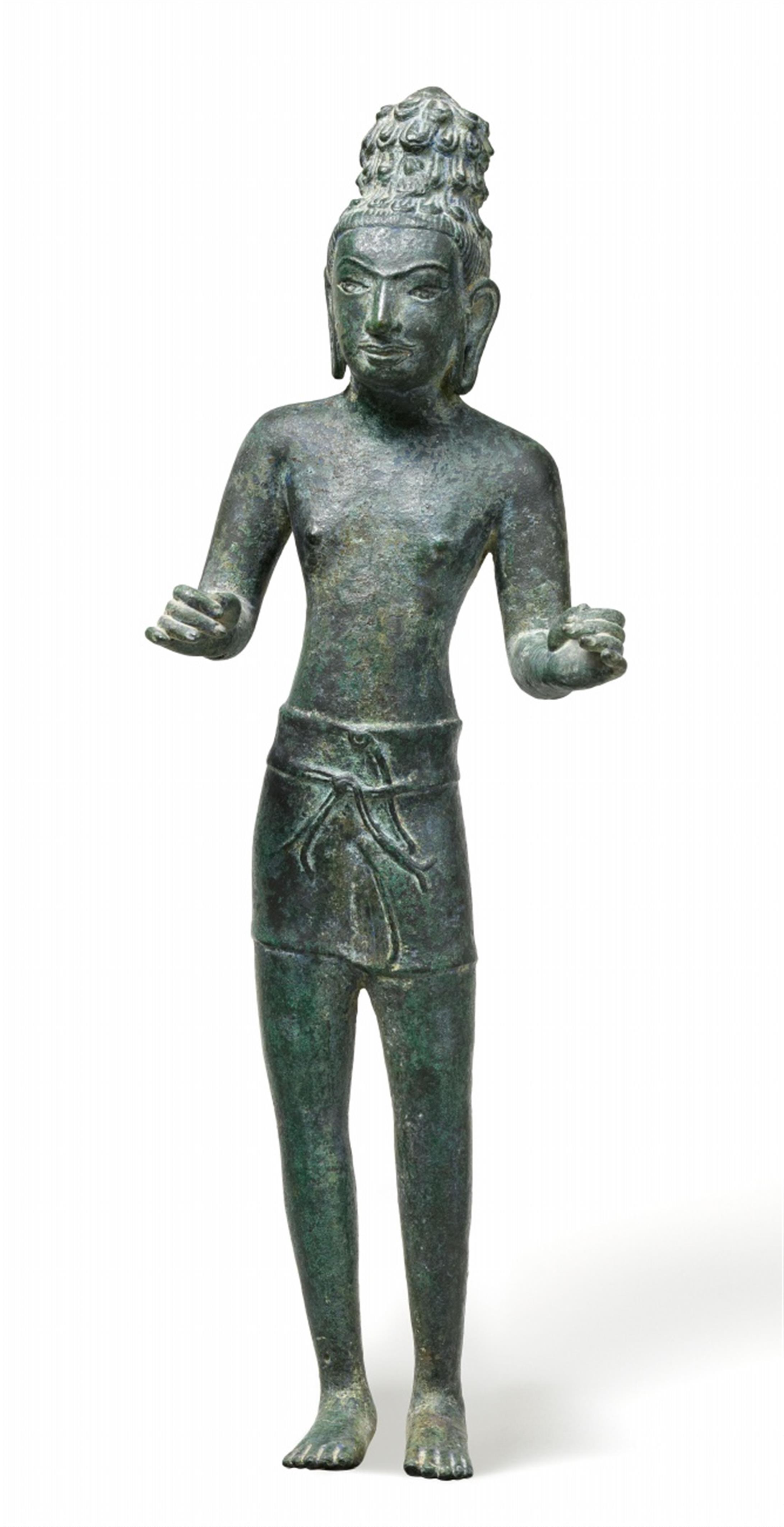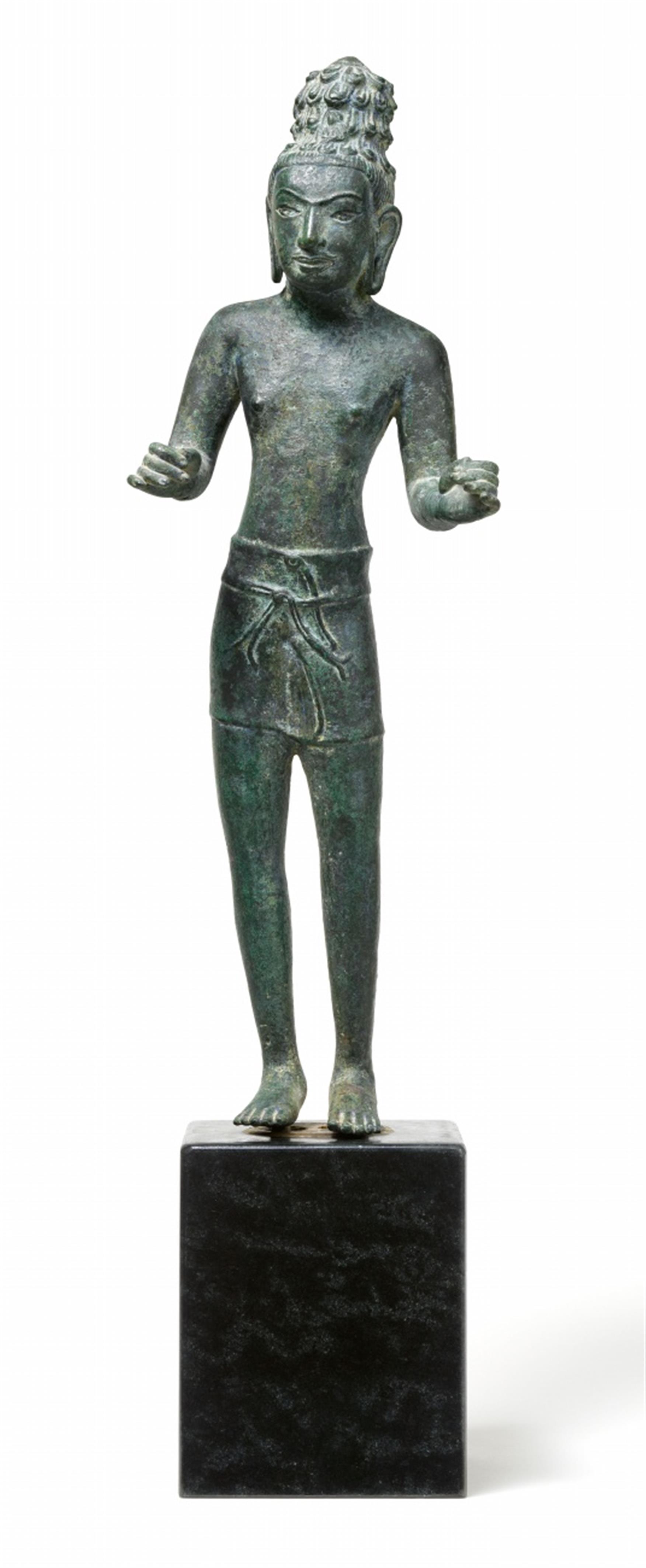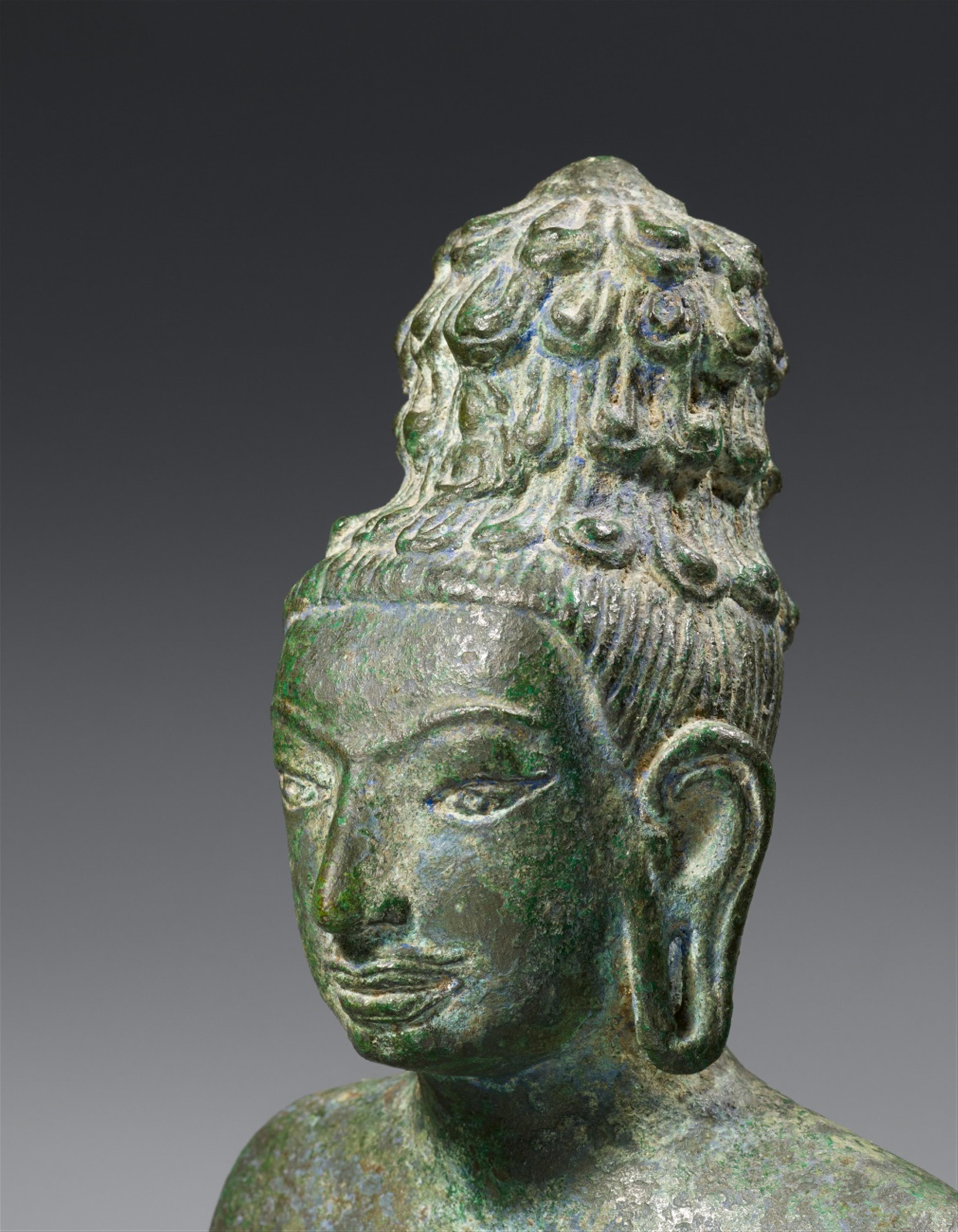A fine and rare Buriram bronze figure of Avalokiteshvara. Thailand, Khorat plateau. Early 8th century
A Thai province of Buriram bronze figure of Avalokiteshvara, standing in slight, so-called tribhanga, his hands formerly held attributes, wearing a short sampot held together at the hips with a thin band, the hair combed into a chignon with a figure of Amitabha in the front, the even features displaying large eyes and a slight moustache. A long tang underneath each foot. Early 8th century. Fitted into a black stone base.
Height without tangs 53,5 cm
This elegant bronze figure of Avalokiteshvara most probably belongs to the so-called Phrakon Chai cache of Buddhist sculptures discovered 1964 by Thai farmers. The cache was actually found in a buried chamber within a temple precinct on a hill (Khao Plai Bat II) east of the village Yai Yaem, in the district of Lahan Sai, in Buriram province, and consisted of around two to three hundred figures ranging in size from 120 to 7 cm. The bronze figures, mostly Avalokiteshvara and Maitreya, while figures of Buddha are rather rare, are fine examples of the Buddhist art of the Canasha kingdom (7th-10th century) located on the Korat Plateau. Their main characteristic is a slender elegant body bare of any jewellery and a short sarong wrapped around the hips. They were inserted into a bronze plinth, which was set into a stone base.
Among the numerous bronze figures published by Emma Bunker stemming from this cache, the figure of an Avalokiteshvara, today in the Denver Art Museum, Denver, CO comes nearest to the presently offered specimen (Bunker 1971-1972, no. 16 and Bunker 2002, no. 26). The posture with a slight bend and the close-fitting sarong held together at the hips with a double string with ends spreading out in opposite directions are the most obvious similarities. Also the facial features with large eyes, fleshy nose and full lips are of the same type. Emma C. Bunker dates the Denver figure to the early 8th century.
Provenance
Johann and Ursula Strebel, Wiesbaden
The figure was placed on the desk in front of a window in the back office of the Strebels' shop in the Wilhelmstraße, which was not accessible to customers. Acquired in South-East Asia in the late 1960s/early 1970s, Ursula Strebel tenderly called the Avalokiteshvara “blue boy”. The son David remembers that in his boyhood the figure was kept in the old villa of his parents.
Literature
Jean Boisselier, Notes sur l’art du bronze dans l’ancien Cambodge, in: Artibus Asiae, Vol. XXIX,4 (1967), pp. 275-334; Emma Bunker, Pre-Angkor Period Bronzes from Pra Kon Chai, in: Archives of Asian Art, 25 (1971-1972), p. 67-76, and the same author, The Prakhon Chai Story, Fact and Fiction, in: Arts of Asia, vol. 32, no. 2 (March-April 2002), p. 106-125






